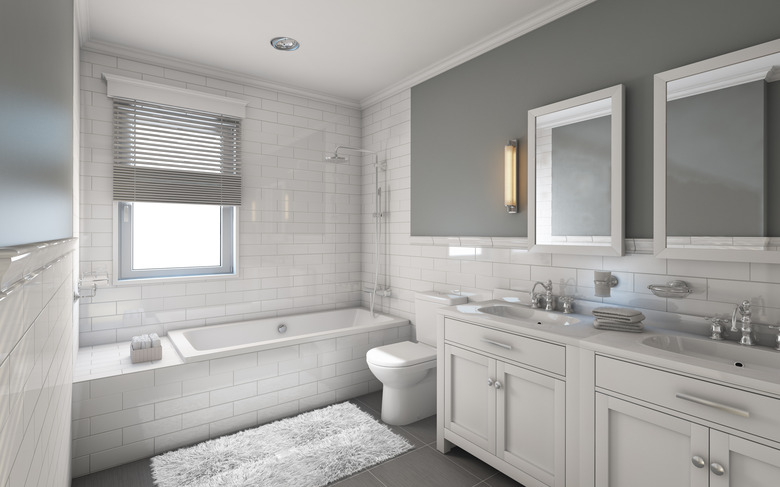How To Restore The Finish To An Acrylic Tub And Shower
We may receive a commission on purchases made from links.
Wear and tear can have an adverse effect on older acrylic bathtubs and shower trays. Although acrylic bathroom fixtures are known to be durable and long lasting, they can start to show their age over time. Scuff marks, stains and discolorations can all contribute to making your tub or shower pan look like it needs a change.
Rather than replacing your shower pan or bathtub, though, you can actually restore the finish to an acrylic tub or shower using a refinishing kit. Following the correct steps and spending time on the prep work are key to achieving a professional finish. You must also ensure you have the right products and tools for the job.
Professional Bathtub Refinishing
Professional Bathtub Refinishing
You may opt to have your older bathtub and shower professionally refinished. This can be less expensive than replacing the fixture, but is still more pricey than undertaking the refinishing task yourself. Generally, professional bathtub refinishing follows the same process as a DIY job, but may last longer.
Before You Begin
Before You Begin
It's important to check your bathtub or shower tray's surface for any larger chips or cracks. These can be filled in using a repair kit to give the area a smoother and newer appearance.
Once you've prepped the surface of your bathtub or shower, you'll want to ensure the rest of your bathroom is protected from your refinishing products. Lay down some newspapers or a drop cloth to cover your floor and protect it from drips. You'll also want to cover your taps and stopper with masking tape to keep them paint-free — or remove them entirely. Use this tape around the edges of your tub or shower tray too.
Before starting your bathtub and shower refinishing project, it's important to clean the surfaces. Any dirt or grease can prevent refinishing products from adhering properly. This can cause an uneven appearance and can create issues with longevity too. Use a bathroom cleaner with bleach and an abrasive sponge to thoroughly clean and scrub the entire surface.
Taking Safety Precautions
Taking Safety Precautions
When refinishing a tub or shower, you also need to make sure you're protecting your body. A respirator and a pair of gloves will protect your skin and respiratory system from harsh chemicals. It's also a good idea to keep your bathroom well ventilated by opening a window or using a fan. The right clothing is also key, including closed-toe shoes, long sleeves and knee pads if you'll be kneeling for extended periods.
Prepping to Refinish
Prepping to Refinish
The next stage of the prep work is gently roughing up the surface of your bathtub or shower. Use sandpaper to remove the gloss from the surface, which will help your paint to adhere. Focus particularly on any areas where there are more severe scuff marks or scratches or where you've applied patching compound. Wear a dust mask during the sanding process to protect your lungs from any small airborne particles.
Once you've thoroughly sanded the entire surface of your bathtub or shower, rinse or wipe it out with a damp rag to remove any residue and then give it adequate time to dry completely. You should also remove your old caulk using a removal tool.
Refinishing Your Tub or Shower
Refinishing Your Tub or Shower
The easiest way to restore the finish to an older tub or shower is by using a refinishing kit, together with a small roller and a small foam brush or varnish brush to reach areas that aren't accessible with the roller. Use a wooden paint stick to stir Part A and Part B separately. Then add Part A to Part B and stir the mixture for two minutes. You can add 99.9 percent isopropyl alcohol (not regular rubbing alcohol) to thin the mixture if necessary. Once the paint is mixed, use it within six hours.
Take your time applying a full, even coat of the paint to the entire surface area. Give the first coat at least an hour to dry and then repeat the process for an opaque and even application. When you're happy with the coverage on your shower or tub, remove the masking tape after the second coat has dried for at least an hour. Reseal the edges of your tub or shower using silicone caulk. Wait at least three days before running water into your tub or shower.
